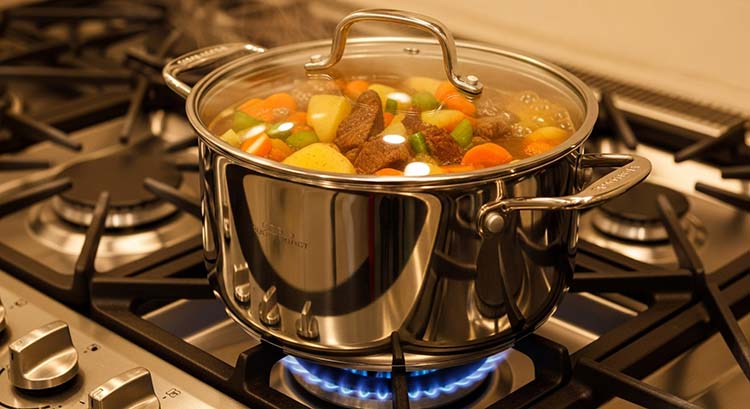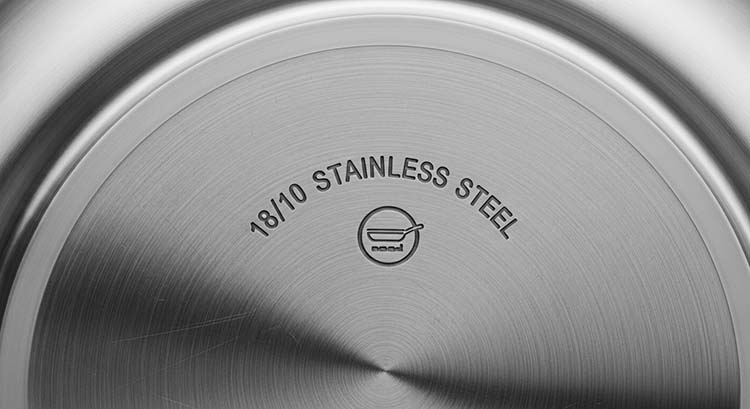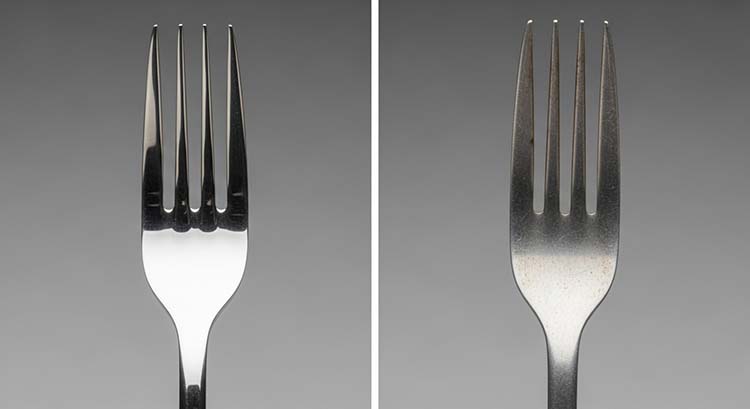Why is stainless steel so good for cooking and eating?
Are you worried that your pots and cutlery might affect your food's taste or your family's health? Some materials can react with your meals, which is a legitimate concern.
Stainless steel is good for kitchens because it is safe, durable, and hygienic. Its surface is non-reactive, so it won't leach chemicals or metallic taste into food. It also resists rust, doesn't scratch easily, and is simple to clean.

I once consulted for a high-end restaurant chain. The head chef was obsessed with taste purity. He told me, "Linc, my ingredients are perfect. The last thing I want is my pan adding its own flavor." We tested everything. We found that acidic sauces, like his signature tomato reduction, would pick up a metallic taste from aluminum pans. But with high-quality stainless steel, the flavor remained pure. This experience showed me that stainless steel isn't just about looking professional; it's a tool that protects the integrity of the food. It's safe, reliable, and it simply lets the food be the star.
Does Stainless Steel Leach Harmful Metals Into Food or Drinks?
You read online about metals getting into your food. It makes you look at your own shiny pots and pans with suspicion, wondering if they are secretly unsafe.
No, high-quality, food-grade stainless steel like 304 or 316 is specifically designed to be stable and non-reactive. It will not leach harmful amounts of metals, even when you cook acidic foods like citrus sauces or tomatoes.

The secret to stainless steel's safety is an invisible shield. The chromium inside the steel alloy reacts with oxygen in the air. This creates a very thin, stable, and non-reactive layer on the surface called a "passive layer1." This layer is what prevents rust, and it also acts as a barrier between the metal and your food. Other metals, like copper and aluminum, don't have this stable protective layer and can react strongly with acidic or alkaline ingredients. This reaction can change the taste of your food and leach metal ions into it. While it's true that stainless steel contains nickel and chromium, they are tightly bound within the metal's structure. In properly made food-grade stainless steel2, they do not migrate into your food in any significant amount. That is why it’s trusted not just in homes, but also in commercial kitchens and for medical implants. Its entire purpose is to be strong and stable.
How Can You Tell If Your Stainless Steel Is 304 or 316?
You're trying to choose a new cookware set. Some are labeled 304, others 316, and the 316 is more expensive. They look exactly the same, so you're not sure if the extra cost is justified.
You can't tell them apart just by looking. 316 steel contains molybdenum, which gives it extra protection against salt and acids. Check the product stamp or ask the manufacturer for a material test report to be 100% sure.

The difference between 304 and 316 grade steel is chemistry, not appearance. Both are excellent, high-quality choices. Grade 304, often called 18/8 or 18/10 for its chromium and nickel content, is the most common food-grade stainless steel. It is perfect for almost all kitchen tasks. Grade 316 is a premium version. It has a similar composition but with an important addition: molybdenum. This element makes the steel even more resistant to corrosion from chlorides, which are found in salt, seawater, and some industrial cleaning chemicals.
For everyday home cooking, 304 is more than enough. So when would you need 316?
- High-End Cookware: Some premium brands use it for peace of mind.
- Marine Environments: If you live near the coast and the salty air affects your equipment.
- Medical Tools: It’s often called "surgical steel" because it's highly resistant to any corrosion.
Since they look identical, the only way to be sure is to trust the manufacturer's label or ask for a material certificate. A reputable seller will always be able to provide this proof.
Do Steel Utensils Have Advantages Over Aluminum Utensils?
Aluminum utensils are cheap and very lightweight, making them seem like a smart buy. But you find they bend easily and start to look dull and stained after only a few uses.
Yes, steel has major advantages. It is significantly more durable, completely non-reactive with food, more hygienic, and easier to keep clean. Aluminum is soft, scratches easily, and can react with acidic foods, affecting taste.

I often see aluminum utensils in temporary settings like campsite kitchens or cafeterias because they are so cheap. However, for any long-term use, stainless steel is the far superior choice. The differences are not just cosmetic; they affect safety and performance. Aluminum is a very reactive metal. If you leave a tomato-based sauce in an aluminum pot, it can take on a metallic taste and the pot can become pitted. Stainless steel's non-reactive surface means your food will always taste exactly as you intended. Furthermore, aluminum is a very soft metal. Utensils bend easily, and cookware scratches deeply. These scratches can trap food particles and bacteria, making them difficult to truly sanitize. Stainless steel is much harder and resists both bending and scratching. It remains smooth and hygienic even after years of heavy use and countless cycles through the dishwasher.
| Feature | Stainless Steel | Aluminum |
|---|---|---|
| Durability | Very strong, resists bending and scratches. | Soft, bends and scratches easily. |
| Food Safety | Non-reactive, no metallic taste. | Reacts with acidic foods, can alter taste. |
| Hygiene | Non-porous, easy to sanitize. | Scratches can harbor bacteria. |
| Appearance | Stays shiny and rust-free for years. | Can stain, pit, and tarnish over time. |
What Exactly Makes Stainless Steel Food-Grade?
You see the phrase "food-grade" everywhere. It feels like a common marketing term, but you don't know what qualifications a product must meet to earn that label.
"Food-grade" isn't just a slogan; it's a legal standard. It means the stainless steel alloy, like 304 or 430, has been tested and certified by agencies like the FDA or LFGB to be non-toxic and safe for food contact.

For a manufacturer like me, "food-grade" is a very specific technical requirement. It means the material has passed strict tests. These tests are designed to ensure that the steel will not transfer any harmful substances to food, even under high heat or when in contact with acidic ingredients. The standards are set by government bodies. In the United States, it's the Food and Drug Administration (FDA). In Europe, a very strict standard is the German LFGB. These tests check for a range of things, making sure the steel won't leach heavy metals like lead or cadmium. They also ensure the material itself doesn't impart any taste or smell. So when you buy a product that is certified food-grade, you are buying a promise of safety. This is why we provide our clients like Jacky with the test reports for every batch. It’s the ultimate proof that our products are safe, reliable, and truly made for the kitchen.
Conclusion
Stainless steel is the top choice for kitchens because it is safe, strong, and hygienic. It protects your food's flavor and offers a lifetime of reliable use with minimal maintenance.
